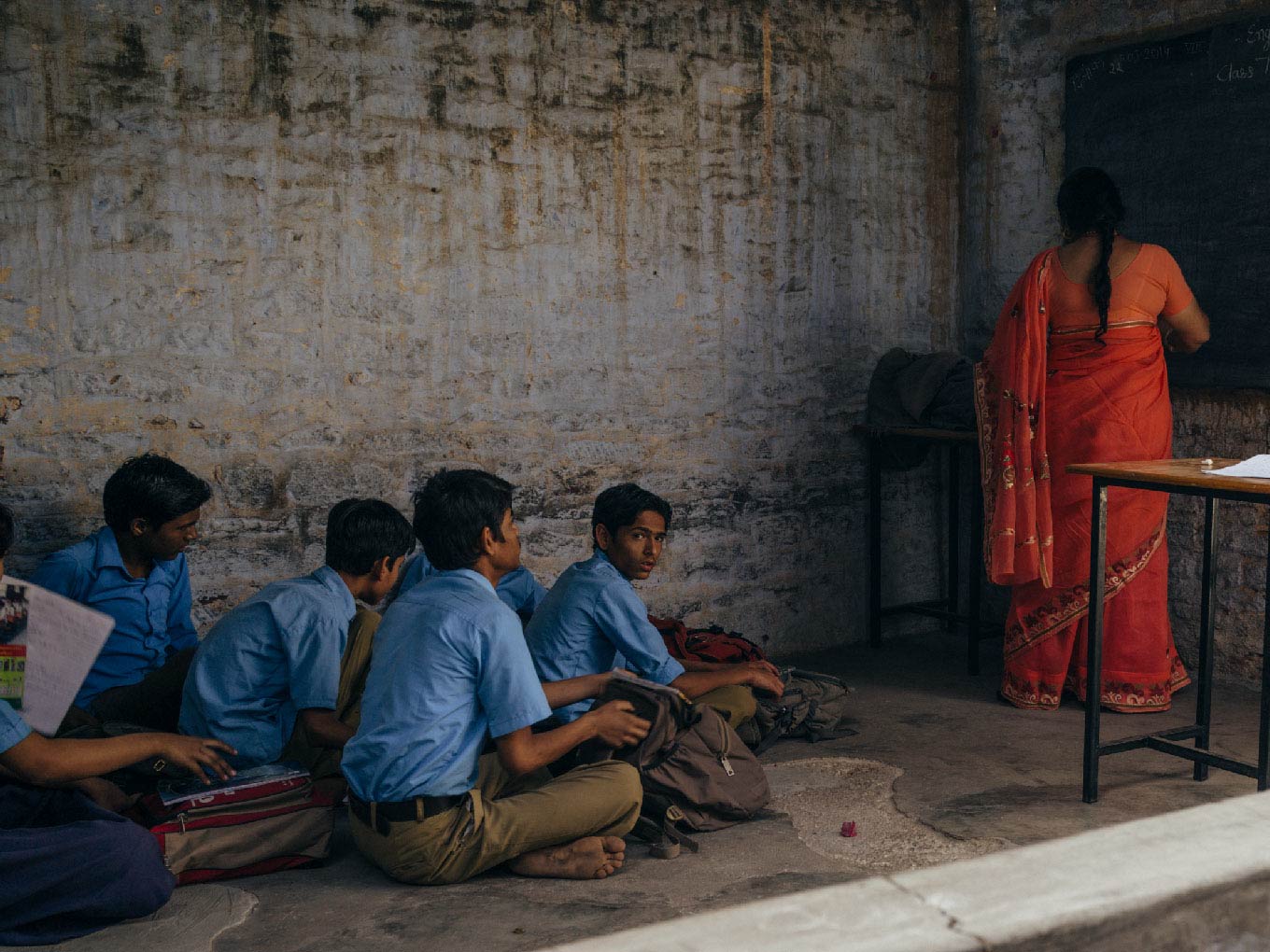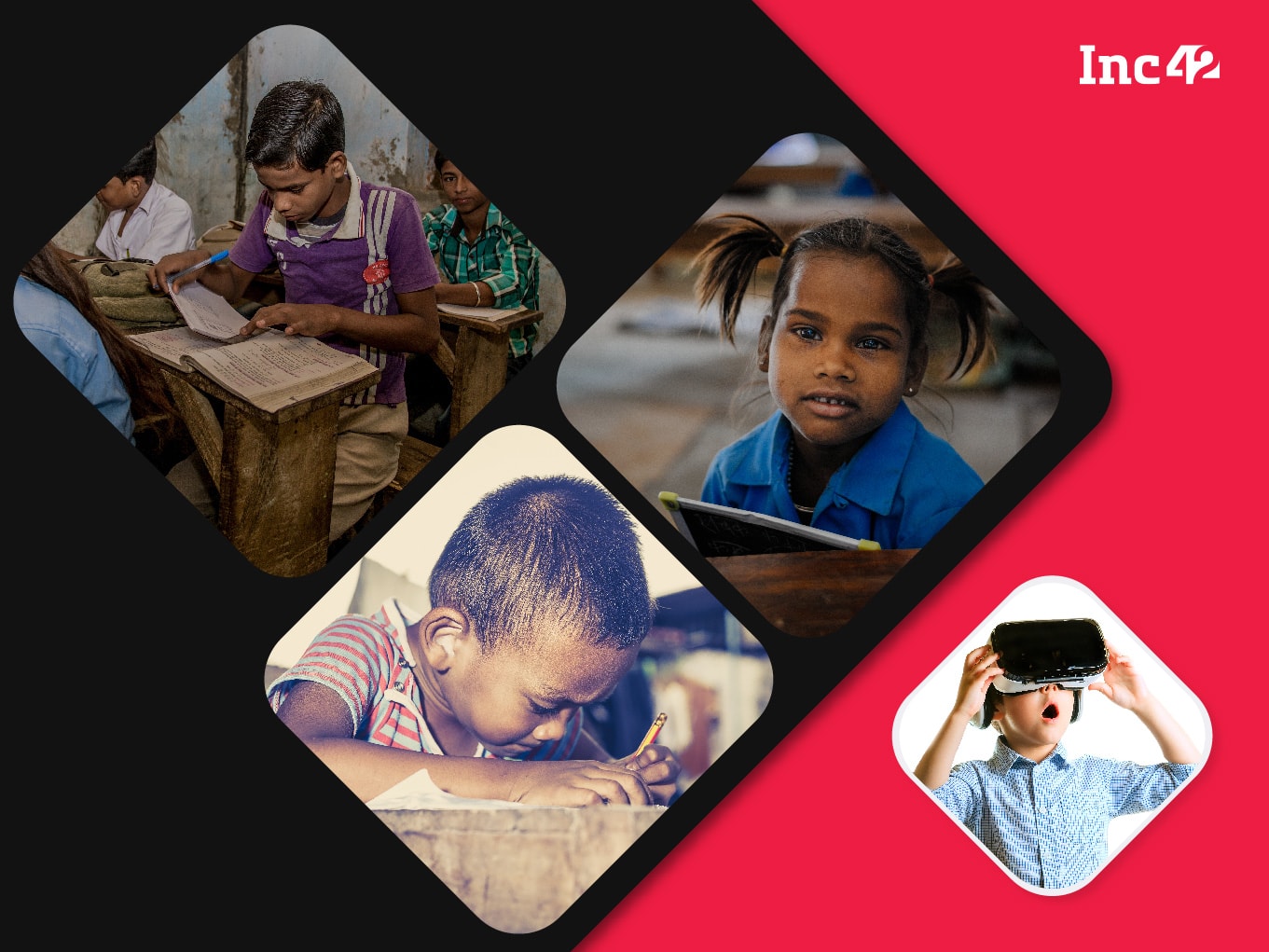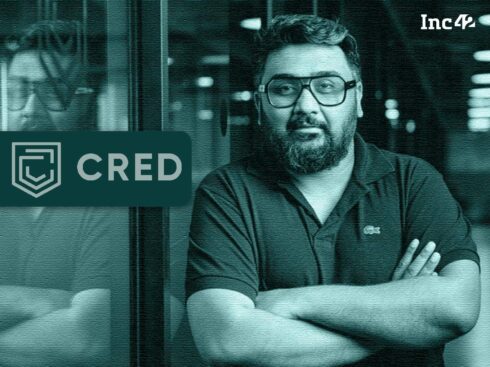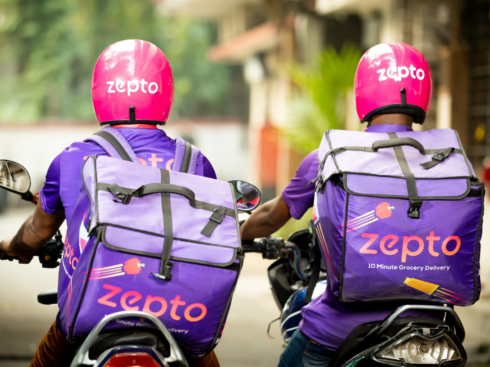SUMMARY
India ranks 94th in overall Prosperity Index rankings and 104th in prosperity index in education
Around 3,500 startups in India are catering to the education space and has received close to $700 Mn in funding in 2018
About 77% of the total funding (between 2014 and 2018) has been poured into just four edtech startups
The Indian education system is currently suffering from some serious lacunae. Over the years, a fair share of the blame has been appropriated to the archaic system of ‘gurukuls’, the colonial rule, and, later on, the society’s obsession with engineers and doctors.
Even in 2018, 71 years after Independence, the percentage of Class II students who could not read a single word of a short text or perform a two-digit subtraction is higher in India than in Uganda or Ghana. Even Vietnam, which ranks below India in terms of GDP, has consistently done better than us in terms of the Organisation for Economic Co-operation and Development (OECD) average in the Programme for International Student Assessment (PISA) scores.
Despite the technological wave which has hit the Indian economy in the past two decades, the rise of edtech startups, and the sudden wave of attention from investors and the government, our education system ranks amongst the worst in the world. Globally, among 149 countries, India ranks 94th in overall Prosperity Index rankings and 104th in prosperity index in education.
Further, in 2018, India ranked 115th in the Human Capital Index (HCI) with its score of 0.44 on a scale of 0 to 1 being even lower than the average score for South Asia. The HCI, which covered 157 countries, seeks to measure the amount of human capital that a child born today can expect to attain by age 18. The index values convey the productivity of the next generation of workers, compared to a benchmark of complete standard education and full health. It has three components — survival, expected years of quality-adjusted school, and healthy environment.
In November 2015, Nobel Prize winner Amartya Sen said at a gathering at the London School of Economics
India is the only country trying to become a global economic power with an uneducated and unhealthy labour force.
More than three years later, his words hold truer than ever for the country.
Fast forward to 2019: The Tech Edge In Education
The amount of technological advancement Indian education has seen in the last eight years is staggering. A three- or four-year-old kid watches his/her favourite cartoons and nursery rhymes on the tablet or smartphone. Videos and interactive features on smart devices have become a popular mode of learning among children, with assistants like Google Home and Alexa bringing in the human interactive touch and. The flexible and non-intrusive nature of this educational format makes learning interesting and captivating.
Not just education, today, life is a technology extravaganza. Irrespective of age, people are glued to their mobile phones from morning to night, gaining knowledge through social media and websites. We download apps to learn new languages and watch YouTube videos to learn how to play musical instruments, how to cook, to exercise, and even how to use products. Books and notes are simply a search away!

Edtech Startups Are Booming, But Are They Thriving?
Digital evolution and the boom in smartphone adoption are expected to define the way Indian students learn. Real-time book updates, online tutoring, edutainment, online test preparation, web-based research, and gamification — technology has changed our traditional education system in more ways than one. With more than 260 Mn enrolments, India has the world’s largest K-12 (primary and secondary) education system.
Today around 3,500 startups in India are catering to the education space, creating content in various formats and languages for students to consume at their own convenience. As per the census of 2011, more than 50% of India’s population is below the age of 25 and more than 65% is below the age of 35. It is expected that in 2020, the average age of an Indian would be 29 years. According to a Google-KPMG report, India’s online education market is set to grow to $1.96 Bn and have around 9.6 Mn users by 2021. Naturally, investors are aggressively looking to fund this sector and make good returns.
In 2018, Indian edtech startups received close to $700 Mn in funding — an 85% jump from the $375 Mn funding in 2017 (of which $230 Mn was invested in BYJU’s alone).
Surprisingly, of the 3,500 startups operating in the space as of 2018, only 7% of them are funded. According to Inc42 DataLabs, from 2014 to 2018, 182 edtech startups were funded with a total of $1.34 Bn. Of these, only 52 startups (28.5%) received more than $1 Mn in funding, amounting to $1.3 Bn, which comprises 99% of the total funding in the period.
What further stands out is that 66% of the total funding of $1.12 Bn (between 2014 and 2018) was taken away by just one company — BYJU’s. In 2018, BYJU’s became the most valuable edtech company in the world — at $3.6 Bn — making it the fifth most valuable startup in India.
About 77% of the total funding (between 2014 and 2018) has been poured into just four edtech startups — BYJU’s, Toppr, Unacademy, and Vedantu.
Other than these four, only a handful of startups received double-digit funding (millions) — Ei-India, Cuemath, Simplilearn, Eduvanz, Meritnation, Edupristine. Combined, these 11 edtech startups received $973 Mn between 2014-2018, accounting for 87% of the total funding in the sector.
Considering BYJU’s as an outlier here, the total funding in the sector between 2014-2018 stood at $385 Mn and 10 startups secured 62% of the funding. This suggests a huge offset in funding to the sector with 166 startups getting just $147 Mn.
One of the reasons for edtech startups being unable to go mainstream and attract investments is lack of awareness about the latest education technology in the country. Besides, jobs still demand conventional educational degrees recognised by designated educational boards. Most edtech startups are not certified by these boards. This makes it difficult for any company to create a business model that is both innovative and has the “Uber of Edtech” vibe so that entrepreneurs to win investors’ trust.
Is The Education Scenario Really Improving?
While it feels great to bask in the claim of more than 260 Mn enrolments in 2018 and India being the world’s largest K-12 (primary and secondary) education system, the ground reality is very different. Not only are a large number of young Indians facing a dearth of decent jobs, it now turns out that many of them are unemployable too. That’s the stark message from the Annual Status of Education Report (Aser) published In Jan 2018.
Here are some highlights of the report:
- After eight years of schooling, only 43% of 14-18-year-olds could do simple division
- Slightly less than half couldn’t add weights in kilograms
- More than 40% couldn’t tell hours and minutes from a clock
- 46% didn’t even know which city is the capital of India
The World Bank says the same thing. In its latest World Development Report of 2018, it says the percentage of Class II students who could not read a single word of a short text or perform a 2-digit subtraction is higher in India than even in Uganda and Ghana.
Also, as mentioned before, Vietnam, which is poorer than India, has consistently done better than the OECD average in PISA scores. India’s educational outcomes are worse than several poor African nations as well.
There is also enormous inequality in access to quality education in India across rural and urban India as well as across socioeconomic classes, which results in massive inequality of opportunity. The National Sample Survey Office’s Key Indicators of Household Consumer Expenditure showed that in 2011-12, the average monthly expenditure on education for those in the 50th-60th percentile of income distribution (the real “middle class”) in rural India was a measly INR 31.47. For those in the same percentile in urban India, the figure was INR 125.49.

Moreover, monthly spending on education for the top 5% of urban Indians was INR 908.12. For the bottom 5% of rural Indians, it was INR 7.54. Such a big difference is bound to be reflected in the quality of education as well.
Edtech: An Alternate Delivery Mechanism For Traditional Education
We’ve been so busy congratulating ourselves for herding our kids into school, it looks like we’ve forgotten to teach them anything. The need is for the education process to change, radically.
In today’s age, with new markets and technologies emerging every year, the syllabi of job skill sets keep changing. However, India has inertia towards conventional education. Despite so many new and innovative formats coming in, the backbone of the education system remains traditional.
Learning in our education system is often driven by the fear of exams and a one-size-fits-all approach and is still synonymous with words such as ‘board exams’, ‘entrance exams’, ‘marks’, etc, albeit digitised. Children are still being trained to solve questions. Every curriculum in India is exam-driven and alternate evaluation processes are not trusted by society. Parents are still prioritising grades, leading to students resorting to more study material and tuitions.
Most of the startups that have forayed into the space to revolutionise education in India have had no option but to mold themselves to cater to such needs. While online lessons have made delivery of lessons convenient, they still follow a classroom approach. The only difference is that mock tests and test preparations, instead of being based on books and test centres, are now being done online. Edtech startups in the discovery space are even helping parents search for tutors and institutions.
Evidently, technology in India’s educational system is acting more as an alternative delivery mechanism while the process and system of education remain traditional. What these startups are doing is providing a digital delivery of content in a more accessible way to factions of the society that have the purchasing power. The ones doing this better are being able to attract more funding.
Let’s take a look at products the top edtech startups are building for the next generation:
Caught in this loop of digitising the delivery of traditional education, edtech startups are not being able to really deliver on building a better education system in the country.
How Are Edtech Startups Approaching The Market?
To understand how these edtech startups are generating revenue, let’s look at two of the most popular startups in this space — BYJU’s and Toppr — and how they are looking to capture the market.
In an article published in The Ken in April 2017, the revenue model of BYJU’s has been elucidated very clearly.
The potential market for edtech startups in India is the 260 Mn children enrolled in schools across India. All they need to do is sell their online learning app to them. But it’s easier said than done. As mentioned earlier, only 5% of the population (mostly in urban areas) has the purchasing power to spend more than INR 23,000 per annum (the minimum value of a course by BYJU’s) or INR 10,000 per annum (the minimum value of a course by Toppr). This brings the actual market size for these edtech startups down to 13 Mn users and a potential revenue pool of INR 29,900 Cr ($4.2 Bn).
Even whittled down from the larger market size, this is quite a big number. However, it hasn’t created any major impact on the Indian education landscape.
According to App Annie data, in the period 1 January-25 March 2017, the BYJU’s app (Android phone and tablet) in India clocked 1,50,129 daily active users (DAU). Compared to the DAU on January 2, 2017 — roughly about 85,000 — the DAU grew 2x in the three-month period. This spike is understandable largely due to January to March being the exam season for Indian schools.
In the period February 2016 to February 2017, BYJU’s recorded MAU (monthly active users) of 1.6 Mn. In the same period, its DAU was just around 1,60,000. A 10% DAU to MAU metric.
The open rate of the BYJU’s app is just 6.62%. The average sessions per user per day is 3.7 while the average session duration per user is about 3 minutes. The average time spent on the app by a user per day is just 11 minutes and 37 seconds.
In a follow-up article by The Ken, BYJU’s claimed 95% of its users access their courses through SD cards, BYJU’S premium .apk file which is distributed on the purchase of a course. However, being in the range of 12GB-20GB size, the use of these SD Cards sound cumbersome.
Taking everything into consideration, the engagement rate shows that students are not really relying on the courses provided by these edtech startups.
Similarly, looking at Toppr, the pricing for the most basic plan (consisting of just video lessons) for Class V students starts at INR 8,000 per annum. On the other hand, a complete course for Class V — consisting of videos, tests and QnA session — costs INR 25,000 per annum. Having compared the Toppr app’s ranking and performance on website statistics providers — Similarweb and Appfigures with BYJU’S, it would be fair to assume the DAU and MOU statistics would not show much variance.
We individually reached out to BYJU’s, Toppr, Embibe, and Unacademy for their stats, but haven’t heard back from them.
What can be concluded through the available metrics is that although BYJU’s, Toppr, Embibe, Unacademy, and other edtech startups have found a market in the education space to tap for revenue generation, the market itself has not been disrupted or developed.
The education system in India, however, is failing because of more intrinsic reasons. There are systemic faults that do not let the demand for good education translate into a great marketplace with excellent education services.
Our neighbour’s son cleared CAT in his first try. You idiot! Now take the BYJU’s or Toppr subscription and practice further so you can clear it too.
— Typical Indian parent to their child
While Indian parents remain sceptical of innovative educational methodologies, they’re open to their kids adopting courses offered by edtech startups to their reference list, not as the exclusive source of education, but as a top up to their regular classroom books and tuition notes.
What Can Be Done To Redeem India’s Education?
Give a man a fish and you feed him one day, teach him how to catch fishes and you feed him for a lifetime.
— Chinese philosopher Lao Tzu, founder of Taoism
Edtech startups need to take a cue from Tzu’s wise words and examine ways to modify the education system of India with an aim to teach students to acquire and practice requisite skills to make a living or career.
Our current education system is geared towards teaching and testing knowledge at every level as opposed to teaching skills. Knowledge — read as information overload — is largely forgotten after exams are over. Still, year after year, Indian students focus on just cramming information. They have no choice, really. The best crammers are rewarded by the system. This is one of the fundamental flaws of India’s education system.
The system rarely rewards those who really deserve the accolades. Risk-taking is mocked in our society. Our testing and marking systems need to be built to recognise original contributions, in the form of creativity, problem-solving, valuable original research, and innovation.
In the Interim Budget 2019-20, interim finance minister Piyush Goyal increased the allocation for the education sector by 12.2% to Rs 93,847.64 Cr. However, on the bitter side, there was no outright increase in overall educational spend. Detailed documents reveal that for certain segments like the Higher Education Finance Agency (HEFA), which invests in building education infrastructure and the Indian Institutes of Information Technology (IIITs), the budget outlay has been reduced.
Considering this is an election year, this is not surprising, as the investment in the education sector doesn’t bring short-term returns to any government. This further highlights the fact that a primary change in the format of education is required, rather than simply financing the traditional wheels of the sector.
There are a number of studies and case studies that suggest proven methodologies to achieve alternative learning experience for students — Udavi, a Case Study, Education Innovation in India, and A case study of SIMS, to name a few. All of these suggest measures such as:
- Re-education of teachers in alternative teaching
- Project-based grading rather than examination-based grading
- Gamification of learning
- Contextualisation — applying various theories and concepts to everyday context in the student’s life
- Hands-on investigation and analysis
- DIY (do it yourself) projects
- Group study and exhibitions
Further, Indian parents need to be taught to trust the new, digital system of education. This requires central and state education boards to make fundamental changes and adopt them across school curriculums. Once the government provides an impetus to alternative learning in schools, only then can edtech startups actively look at designing products for such learning and create a real impact on educational standards.
Globally, tech startups have been able to disrupt and expand markets across sectors only in those countries where the business framework is not restricted by government regulations and there is no resistance to change. In India, leading startups such as Paytm, Flipkart, Ola, Oyo, Swiggy, Bigbasket, Grofers, and many others have been able to disrupt various sectors by creating niche markets within the sectors. They not only capitalised on the traditional market space but also increased the market size of their respective sectors, creating future prospects by modernising the segments and also expanding them for businesses to grow and innovate further.
Edtech startups, too, should get the socio-economic support they need to create the space for alternative learning in the Indian market, else they will keep fighting for a share of the already existing, constant market size.



























